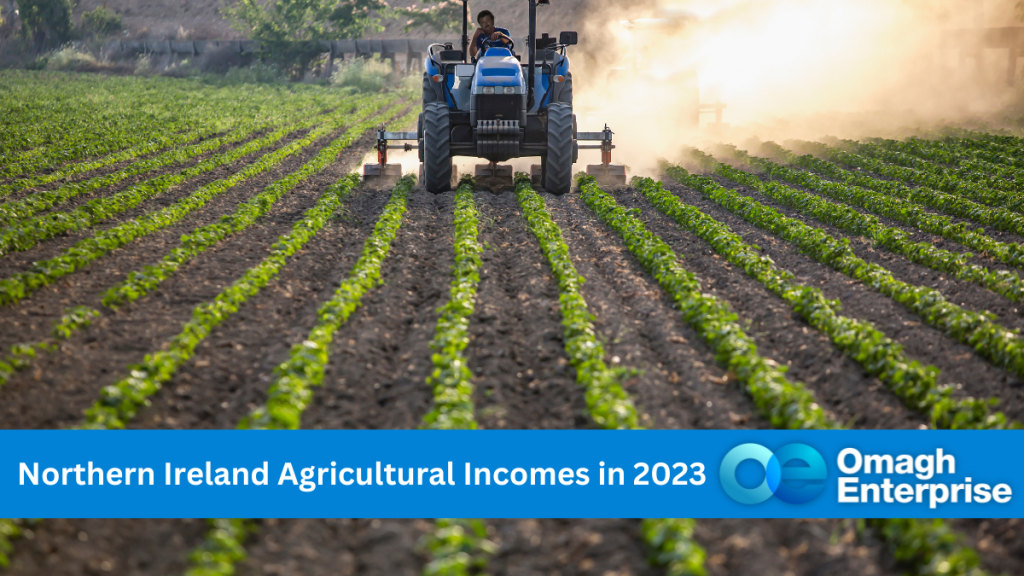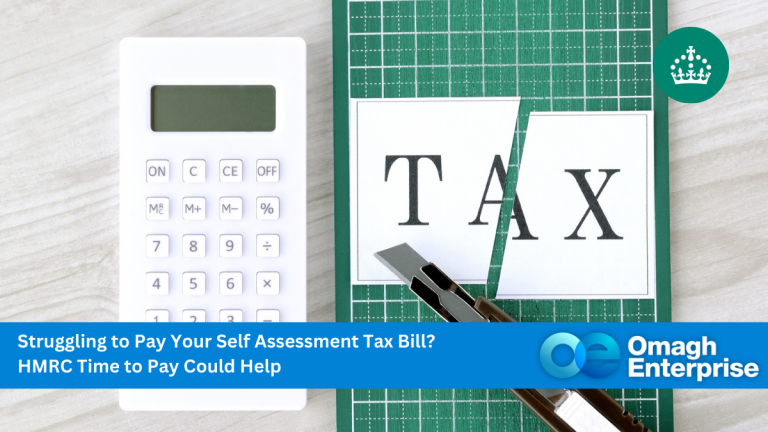The Department of Agriculture, Environment and Rural Affairs (DAERA) has published the first (provisional) estimate for farm incomes in 2023. Revisions have been made to previous years.
Aggregate Agricultural Income
Provisional figures indicate that the ‘Total Income from Farming’ (TIFF) in Northern Ireland decreased by 44.0% (47.8% in real terms) from £609 million in 2022 to £341 million in 2023.
TIFF represents the return on own labour, management input and own capital invested for all those with an entrepreneurial involvement in farming. It represents farm income measured at the sector level. Graph 1 shows TIFF from 1990 to 2023.
Total Gross Output for agriculture in Northern Ireland was 7% lower at £2.87 billion in 2023. There was a 6% decrease in the value of output from the livestock sector, while field crops decreased by 21% and horticulture decreased by 27%. These figures are for the calendar year and therefore they represent the outturn across two harvest years. Graph 2 shows Northern Ireland Agricultural Gross Output from 1990 to 2023.
Dairying remains the largest contributor to the total value of Gross Output at £892 million in 2023; a decrease of 21% between 2022 and 2023. The annual average farm-gate milk price decreased by 21% to 35.1 pence per litre while the volume of raw milk produced in Northern Ireland decreased by 0.2% to 2.5 billion litres.
The output value of cattle was 6% lower at £568 million in 2023. The total number of animals slaughtered decreased by 5.8% in 2023, whereas the average carcase weights for clean and cull animals were 1.3% and 2.3% lower respectively. These changes resulted in the volume of meat produced being 7.1% lower in 2023. The average producer price for finished clean cattle was £4.60 per kilogram in 2023 while the average producer price for cull animals was £3.24 per kilogram. These prices were 10% and 3% higher than their respective averages for 2022. In addition to these changes, there was also a stock change of minus £48 million due to a reduction in the number of cattle on ground between 2022 and 2023.
The value of output from sheep decreased by 0.5% to £109 million in 2023. The total number of sheep slaughtered increased by 4% in 2023 whereas the average carcass weight decreased by 2% to 22 kilograms. Volume of sheep meat produced increased 2% in 2023. The average producer price increased by 3% to £5.50 per kg.
All intensive sectors recorded an increase in their output. The value of output in the poultry sector increased by 2% to £380 million in 2023 while the egg sector increased by 47% to £223 million. The value of pig output also increased by 15% to £297 million. The poultry sector recorded a 8% increase in its production volume for 2023, whereas the pigs and eggs sectors recorded a 4% and 0.3% decrease in their respective production volumes when compared with their previous year levels. Producer prices in the pigs and eggs sectors increased by 20% and 43% respectively, whereas, the producer price for poultry decreased by 3%.
The total output value for field crops decreased by 21% in 2023 to £86 million. This was due to decreases in both grain prices and yields in 2023. The value of output for cereals decreased by 37% to £40 million whereas the value of output for potatoes increased by 15% to £31 million. Output values for field crops are across a calendar year and include production from two harvests.
The value of output recorded in the Horticulture sector was lower year on year for 2023, at £70 million. Mushrooms and vegetables are the main contributors to this sector in value terms, with a combined estimated output value of £46 million.
The estimated value of the 2023 direct payments (Basic Payment Scheme and Young Farmers’ Payment) was £298 million, representing an increase of 0.4%, when compared with the 2022 payments.
The total value of Gross Inputs decreased by 0.4% in 2023, to £2.17 billion. Graph 3 shows the breakdown of Northern Ireland Agricultural Gross Input from 1990 to 2023. Feedstuffs costs, which accounted for 57% of the total Gross Input estimate, increased by 5% to £1.24 billion in 2023. There was a 3.3% increase in the volume of feedstuffs purchased and a 1.6% increase in the average price paid per tonne.
The total cost of fertilisers in 2023 decreased by 43% with a 14% decrease in the volume purchased and a 33% decrease in the average price paid per tonne. There was also a 36% fall in the value of total lime purchases, with the result that total expenditure on fertilisers and lime decreased by 42% to £112 million.
Total machinery expenses decreased by 2% to £199 million in 2023, mainly as a result of a 10% decrease in the cost of fuel and oils.
A detailed document covering the period 2018–2023 and containing all the key figures used to derive TIFF in Northern Ireland can be downloaded from the DAERA website.
Estimates for the United Kingdom were released on 06 June 2024 and can be downloaded from the DEFRA website.




